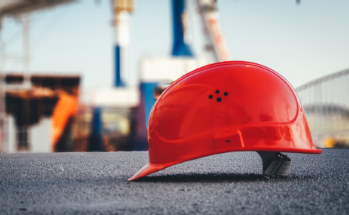Two years on from the onset of the pandemic, how has Covid-19 impacted health and safety in construction?
Though Covid-19 restrictions have been lifted across England, their impact on construction sites is still being felt.
The pandemic caused short-term challenges for the sector but also created opportunities for improvement and delivered long-term changes. Initial uncertain availability of PPE made way for a renewed appreciation of protective equipment, while the necessity for off-site operations has made way for more regular use of modern methods of construction.
Here we review the elements of health and safety in construction which have been created, accelerated, or enhanced over the last two years:
Accelerated – off-site construction methods
The pandemic has accelerated the already growing use of off-site methods. Methods such as pre-fabricating building components to be installed as pre-assembled parts helped developers to adhere to social distancing guidelines by limiting the number of people required on site.
The temporary nature of construction sites and complex working arrangements required to deliver a build means social distancing created unique challenges. Alternative approaches like off-site methods ensured restrictions could be adhered to without slowing a project’s progress.
As such, the value of off-site methods is now better appreciated, offering quality and cost-saving benefits by delivering elements of a construction in controlled manufacturing facilities. These modular methods improve planning and programme timings by making processes more predictable and less susceptible to the impact of other factors, such as renewed restrictions or just bad weather.
Improved – attitudes to health and safety
Industry leaders have suggested the construction sectors’ flexibility in adapting to Covid-19 restrictions suggests an increased, or renewed, focus on safety overall. Workers appreciating the value of PPE and adapting ways of working, for example, demonstrates improved attitudes across the sector; recognising health and safety as protective, rather than restrictive, practice.
Enhanced – mental health
The pandemic has brought a renewed focus on mental health, particularly in the construction industry as employers increasingly recognise the impact of recent years and the importance of worker wellbeing. Since poor mental health causes around 20% of staff absences in construction (according to a YouGov survey), addressing this issue is essential for the industry.
A new mental health text helpline for construction workers was launched in February. The text message service, delivered by construction charity Lighthouse Club, allows those who are struggling to access free, anonymous and immediate support and guidance simply by texting HARDHAT to 85258 (in the UK).
New – the Building Safety Bill
The government’s new Building Safety Bill is currently going through the House of Lords as legislators seek to enhance the rules and regulations around building safety and construction products.
The Bill has been brought in in the wake of the Grenfell Tower tragedy in 2017. Developed by the Department for Levelling up Housing and Communities, it oversees how residential properties are constructed, maintained and made safe. It offers new or enhanced regulations around building safety and construction products, as well as giving residents and homeowners greater rights, power and protection.
For the built environment sector, the Building Safety Bill creates a framework to ensure homes are safe and high-quality through their design, construction and management, setting out requirements of materials, products and processes. It also places particular emphasis on accountability and safety for high rise buildings.
The Bill is expected to be passed later this year, with its provisions then being incrementally put into place.
Unchanged – health and safety cornerstones
Of course, the ‘basics’ of health and safety remain unchanged. The key tenets of ensuring safety on-site – working at height, movement of materials, use of correct PPE, and managing risk of collapse, for example – continue to be of the utmost importance for developers, contractors and suppliers alike.
Without the additional Covid-19 safety mandates construction sites should now be ensuring general health and safety practices and risk assessments remain stringent. New approaches or renewed focusses should only add to, not distract from, these.
Improved approaches to health and safety will support the construction industry as it leads the economic recovery from the pandemic.
For more industry insights, subscribe to our newsletter.
You may also be interested in our article: ‘How to stay on target while working off-site’

